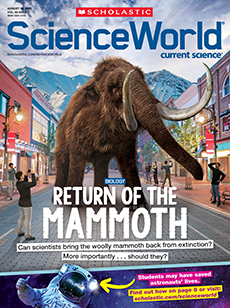Nearly 2,000 years ago, the ancient Roman city of Pompeii was suddenly wiped off the map. It was the year 79 A.D., and the city’s residents had been experiencing frequent mild earthquakes for months. Quakes are common on Italy’s western coast, so people didn’t pay them much attention. Little did they know that the seismic activity was a warning. Mount Vesuvius—a large volcano east of the city—was about to blow its top. It would be one of the most violent eruptions in human history, killing an estimated 30,000 people.
Today, historians have a detailed account of what happened that fateful day, thanks to a Roman teenager named Pliny the Younger. The 17-year-old documented the eruption from the nearby city of Misenum. He described seeing a massive, gray cloud rising from Vesuvius’s peak. It reached 32 kilometers (20 miles) into the sky. Hours later, a pyroclastic flow of ash, rocks, and superheated gases rushed down the slopes of the volcano, engulfing the city. “It traveled at hurricane-like speeds and killed instantly,” says Christopher Kilburn, a volcanologist from the University College London in England who studies the region.
Nearly 2,000 years ago, the ancient Roman city of Pompeii was suddenly wiped off the map. It was the year 79 A.D. For months, people in the city had been feeling many mild earthquakes. Quakes are common on Italy’s western coast, so people didn’t pay much attention. They didn’t know that the seismic activity was a warning. A large volcano, Mount Vesuvius, sat east of the city. It was about to blow its top. This would be one of the most violent eruptions in human history, killing about 30,000 people.
What happened on that deadly day? Historians have a detailed account, thanks to a Roman teenager named Pliny the Younger. The 17-year-old wrote about the eruption from the nearby city of Misenum. He described what he saw. A huge, gray cloud rose from Vesuvius’s peak. It reached 32 kilometers (20 miles) into the sky. Hours later, a pyroclastic flow of ash, rocks, and superheated gases rushed down the volcano’s slopes. The flow swallowed the city. “It traveled at hurricane-like speeds and killed instantly,” says Christopher Kilburn. He’s a volcanologist from the University College London in England who studies the region.

